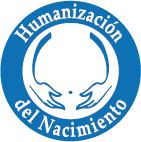BIBLIOGRAFÍA DE NIVEL BÁSICO.
DOCUMENTOS DE LAS OMS:
1.- Organización Mundial de la Salud: Declaración de Fortaleza.
Tecnología apropiada para el parto. Lancet 1985; 2:436-437.
2.- Organización Mundial de la Salud: Clasificación de las prácticas en el parto normal.http://www.who.int/treproductive-health/publications/MSM_96_24_Chapter 6. (texto completo en rednacer.cl, documentos)
TEXTOS:
1.- Boff,L: Saber cuidar. 9º Edición. Petropolis, Brasil: Editorial Voces.2003.
2.- Odent,M: El nacimiento renacido. Buenos Aires, Argentina:Editorial Errepar S.A.1984.
3.- Odent,M: El bebé es un mamífero.2ºEdición.Tenerife,España:Editorial Obstare.2007.
4.- Davis-Floyd,R:Perspectivas antropológicas del parto y nacimiento humano.Buenos Aires,Argentina;Editorial Creavida.2009.
DOCUMENTOS DE LAS OMS:
1.- Organización Mundial de la Salud: Declaración de Fortaleza.
Tecnología apropiada para el parto. Lancet 1985; 2:436-437.
2.- Organización Mundial de la Salud: Clasificación de las prácticas en el parto normal.http://www.who.int/treproductive-health/publications/MSM_96_24_Chapter 6. (texto completo en rednacer.cl, documentos)
TEXTOS:
1.- Boff,L: Saber cuidar. 9º edición. Petropolis, Brasil: Editorial Voces.2003.
2.- Odent,M: El nacimiento renacido. Buenos Aires, Argentina:Editorial.Errepar S.A.1984.
3.- Odent,M: El bebé es un mamífero.2ºEdición.Tenerife,España:Editorial Obstare.2007.
4.- Davis-Floyd,R:Perspectivas antropológicas del parto y nacimiento humano.Buenos Aires,Argentina;Editorial Creavida.2009.
5.- Odent,M: La cientificación del amor.Buenos Aires,Argentina;Editorial Creavida.2001.
6.- Fernández del Castillo,I: La revolución del nacimiento. Madrid, España: Editorial Epaf S.A.1994.
7.- Olza,I; Lebrero,E: ¿Nacer por cesárea? Barcelona,España: Editorial Granica S.A. 2005.
8.- Muñoz,H;Kaempffer,A;Castro,R;Valenzuela,S: Nacer en el siglo XXI de vuelta a lo Humano. Humanización del Proceso Reproductivo Mujer-Niño-Familia; Santiago, Chile 2001,Ministerio de Salud.Universidad de Chile.
ARTÍCULOS:
1.- Anderson,GC et als. Early skin-to-skin contact for mothers and their healthy newborn infants (Cochrane Review). From Cochrane Library, Issue 3, 2004.
2.- Carroli,G ets als. Episiotomy for vaginal birth (Cochrane Review). From Cochrane Library, Issue 2, 2005.
3.- Kimelman,M. González L. El proceso de vinculación, una tarea del equipo obstétrico.Foro de Ginecologia Vol.6,Nº 2,2003.
4.- Cluett E,Burns E. Inmersion in water in Pregnancy, Labour and Birth (Cochrane Review). The Cochrane Library 2009; Issue 2.Oxford: Update Software
5.- Hodnet,ED et als. Continuous support for women during childbirth (Cochrane Review). From The Cochrane Librar, Issue 2,2005.
6.- Gupta,JK et als. Position in the second stage of labour for women without epidural anaesthesia (Cochrane Review). From The Cochrane Library, Issue2, 2005.
7.- Treude,C et als Usere Erfahrungen mit Vertikalen Gebärhaltungen. Die Hebamme 2004 ;18 :36-37.
8.- Harder, I. Boding-Förderung im Alltag. Die Hebamme 2004;17:136.
9.- E Vain,N et als. Oropharyngeal and nasopharyngeal suctioning of meconium-stained neonates before delivery of their shoulders :multicentre, randomised controlled trial. Lancet 2004;364; 597-602.
10.- Kennell,J et als. Starting the process of the mother-infant bonding. Acta Paediatr. 2005 Jun; 94 (6):775-7.
11.- Pedersen CA. Biological aspects of social bonding and the roots of human violence. Ann N Y Acad Sci. 2004 Dec;1036:106-27.
12.- Zan,F. (Importance of attachment in the development of psychism). Vertex. 2004 Jun-Aug;15(56):121-9.
13.- Salinas,H.Factores predictors de cesárea.Rev Chil Obstet Ginecol.2004;69(5):357-360.
14.- Sosa,R et als.The effect of a supportive compagnion on perinatal problems; length of labor and mother-infant-interaction. The New England Journal of Medicine1984.
